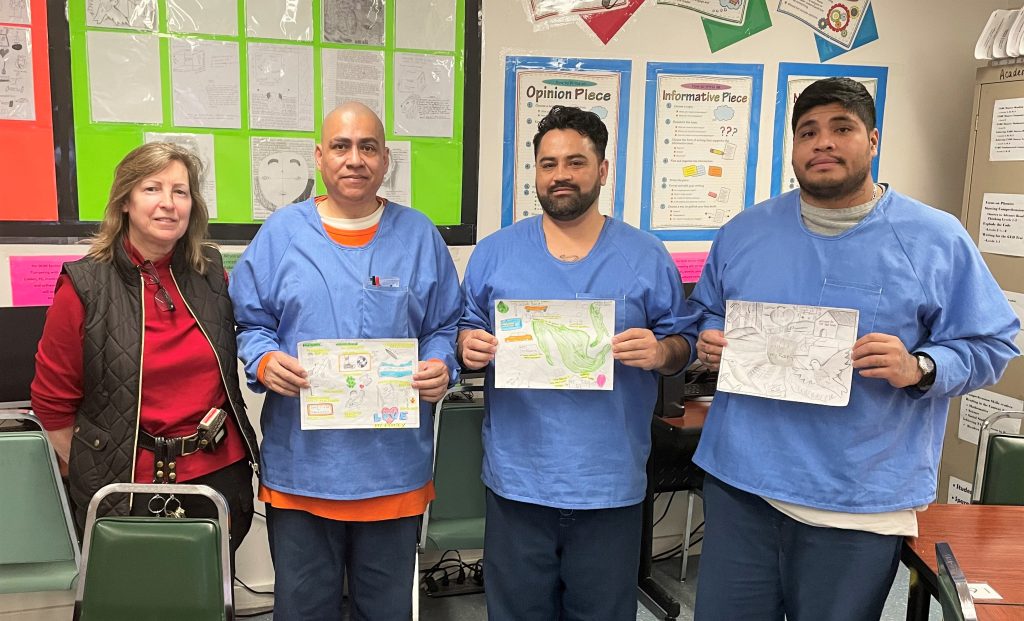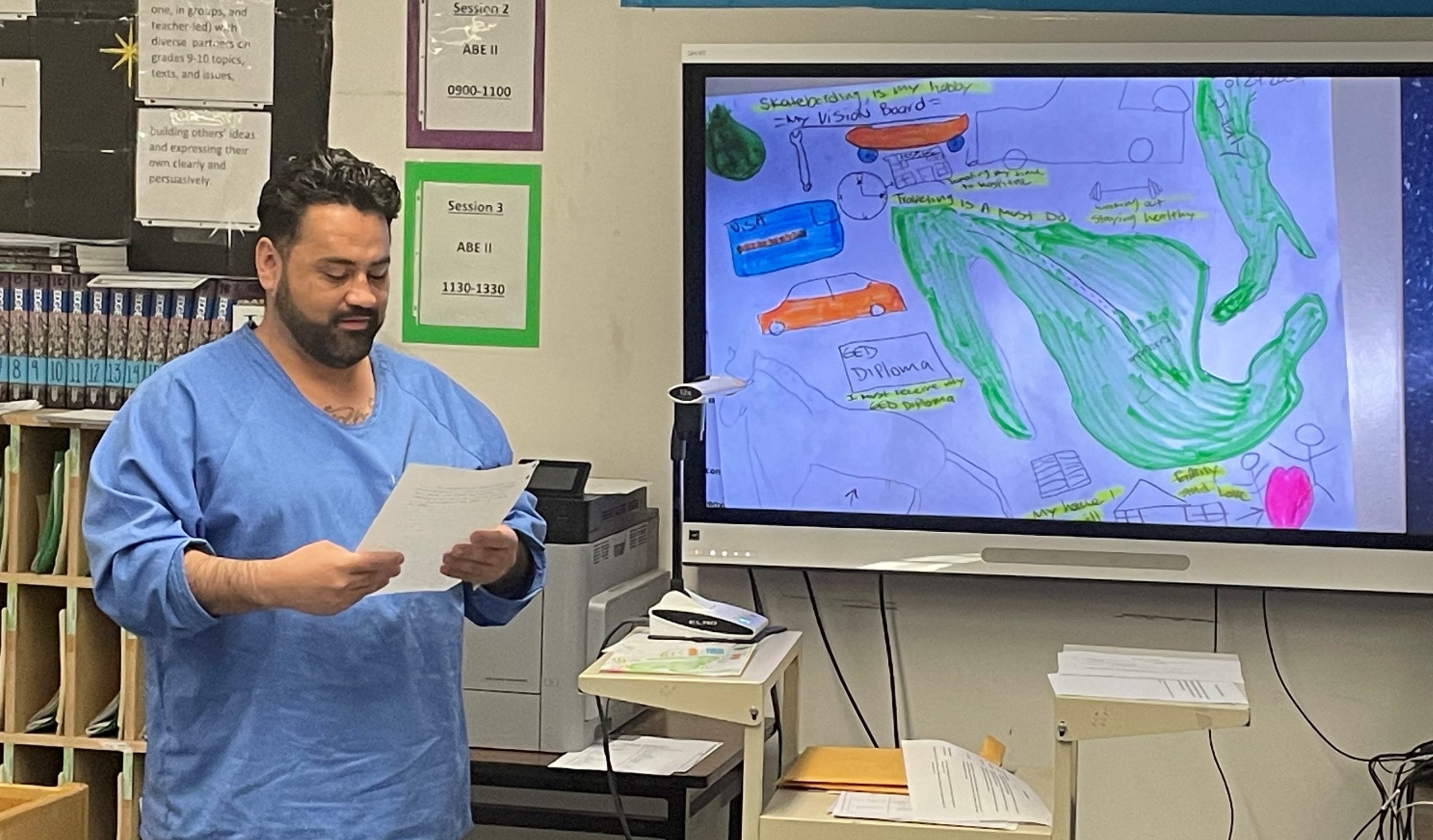A goal-planning project offered by an educator at Susanville’s High Desert State Prison has been transformative for her students.
Lisa Scotti’s Adult Basic Education I/II classes participate in a variety of activities to meet the basics for reading, writing, speaking, and listening. She applies best practices to maintain student engagement, increase student knowledge, meet common core standards, and facilitate collaboration between students.
The more students use these skills, the more confident they will be in public speaking. This all helps their reentry efforts for job interviews and employability.
A recent goal-planning assignment found High Desert students creating a resolution/vision board project. After students completed final copies of their resolution essays, the second part of required them to create a visual representation (vision board) to support the goal-setting process.
Vision board allows expansion of goals and ideas
While the resolution paper focused on one goal, the vision board allowed students the opportunity to expand on these goals by sparking their creativity, as well as igniting their own imaginations.
Students were given multiple organizers to help with the transfer of skills and to make the understanding of the material more relevant.
Finally, the students presented their final projects to their peers. Often the instructor invites visitors and administrators, allowing students to benefit from exposure with familiar individuals as well as strangers. Not only do students gain confidence, but also build upon their own self-determination skills.
Presentations include:
- structured student interaction
- use of graphic organizers for collecting and gathering information
- understanding and using academic language, known as academic language frames
- checking understanding through modeling and application.
The language frames were presented in the graphic organizer for students to read and understand as they made comments following each presentation. Students conducted peer reviews to expand their own interpretation of the speaker’s work in a structured learning environment.
Prison leadership attends presentation
Staff attending included the Warden, Chief Deputy Warden, Associate Warden, Captain, Lieutenant, Principal, Vice-Principal, and Academic Coach. They also participated in the peer review.
“The discourse between the student speakers and their audience was phenomenal. The affirmations were a testament to students in that the things they envisioned were recognized by others,” said one of the attendees. “In the end, students gained valuable insight into the world of communication, collaboration, and team building. These are necessary skills to survive into today’s employment arena.”
What began as a daunting task for many of the students turned into a meaningful project, enabling them to clarify their goals and desires.
“Students need to make better choices in their lives both inside the institution, as well as on the outside. Vision boards become a catalyst to help students in aligning their thoughts, emotions, and actions toward their goals. Through visualization and positive reinforcement, students will be able to clarify their intentions, through focus and motivation, and in the end, cultivate a mindset of possibilities,” said Scotti.
Submitted by Lt. J. Micone

Read more rehabilitation stories.
Follow CDCR on YouTube, Facebook, X (formerly Twitter). Listen to the CDCR Unlocked podcast.
